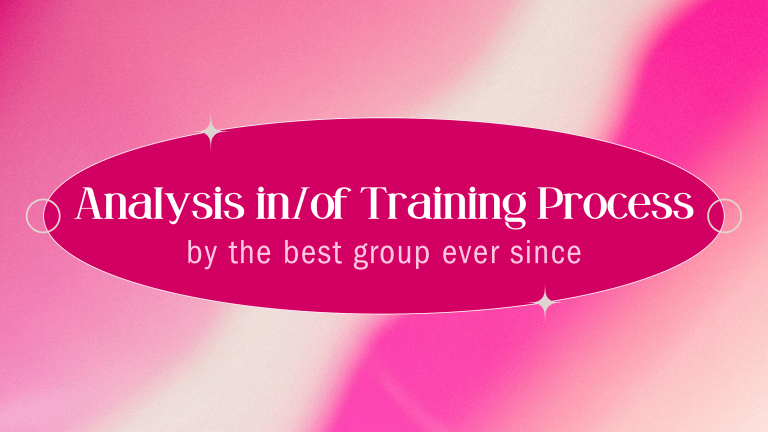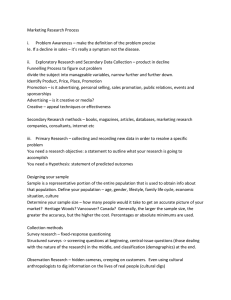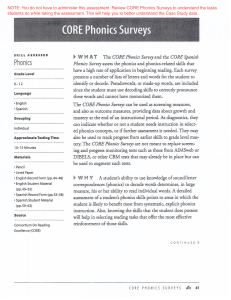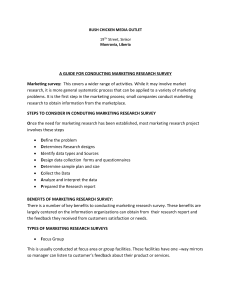
Analysis in/of Training Process by the best group ever since introduction Conducting a needs analysis is the first step in developing an employee training system (Noe, 2007). The purpose of needs analysis is to determine the types of training, if any, that are needed in an organization, as well as the extent to which training is a practical means of achieving an organization’s goals. The importance of needs assessment was demonstrated by a meta-analysis indicating better than normal training effectiveness when a needs assessment had been done prior to the creation of the training program (Arthur, Bennett, Edens, & Bell, ). As shown in Figure ., three types of needs analysis are typically conducted: organizational analysis, task analysis, and person analysis (Goldstein & Ford, ). Organizational Analysis The objective of this analysis is to determine those organizational factors that either facilitate or inhibit training effectiveness. A properly conducted organizational analysis will focus on the goals the organization wants to achieve, the extent to which training will help achieve those goals, the organization’s ability to conduct training, and the extent to which employees are willing and able to be trained (McCabe, 2001). Organizational Analysis An organizational analysis should also include a survey of employee readiness for training. training will be effective only if the organization is willing to provide a supportive climate for training, it can afford an effective program, employees want to learn, and the goals of a program are consistent with those of the organization (Broadwell, 1993). Organizational Analysis An organization may also want to consider the following in making an effective organizational analysis: 1. Establish goals and objectives. 2. Economic Analysis. 3. Personpowe analysis and planning. 4. Climate and attitude surveys. 5. Resource analysis. Task Analysis PURPOSE: To utilize job analysis methods to identify the tasks performed by the employees, the conditions under which these tasks are performed, and the competencies needed to perform the task. COMMON METHODS 1. Job descriptions 2. Interviews 3. Observations 4. Task inventories 5. Performance appraisals STEPS IN TASK ANALYSIS 1. Identify tasks and competencies 2. Determine how employees are trained to perform each task Task Analysis Person Analysis -Is based on the recognition that not every employee needs further training for every task performed -To determine the individual training needs for each employee, person analysis uses performance appraisal scores, surveys, interviews, skill and knowledge tests, and/or critical incidents. Performance Appraisal Scores The easiest method of needs analysis Low ratings on a particular dimension for most employees may indicate that additional training in that dimension is needed Types of rating errors in line with performance appraisal score: ▪ Leniency error ▪Strictness error Surveys Another common approach to determine training needs is to design and administer a survey that asks employees what knowledge and skills they believe should be included in future training. Advantages 1. Eliminate the problems of performance rating errors. 2. Know the strengths and weaknesses. 3. Training needs can be determined with surveys Disadvantages 1. Employees may not be honest. 2. Organization may not be able to afford the training suggested by the employees. Questionnaires: Most common method of surveys. It asks employees to list areas in which they would like to further or future training. A better method is to provide a list of job-related tasks and components of knowledge and have the employees rate the need for training on each Results of these ratings are given to the supervisors who validate the results. This process is used to determine whether the supervisors agree with their employees perception to prioritize training needs. List of Job Related Tasks Paperwork Dealing with customer Complaints Answering emails. Example: Training Needs Survey/Assessment This is an assessment that looks at employee and organizational knowledges, skills, and abilities, to identify any gaps or areas of need Interviews: 3rd Method of needs analysis. Usually done with a selected number of employees. Interviews are not used as extensively as surveys, but they can provide indepth answes to questions about training needs. Main Advantage & Disadvantage A: Employee feelings and attitudes are revealed more clearly than with the survey approach. D: Interview data are more often difficult to quantify and analyze. Skill and Knowledge Tests Skill test or a knowledge test. The 4th method for needs analysis. Some examples of areas that could be tested to determine training needs include: Knowledge of lending laws for loan officers. Knowledge of company policy for new employees. Free-throw shooting for basketball players. Dreaded midterm exam for this course. If all employees score poorly on these tests, training across the organization is indicated. If only a few employees score poorly, they are singled out for individual training. The biggest issue with using testing to determine training requirements There are not many tests accessible for this purpose. If a company want to employ this approach, it will most likely need to develop its own tests. Time-consuming and expensive. Critical Incidents The 6th technique for determining training requirements. Not a commonly used method, even so, it will be discussed here since it is relatively easy to use, especially if a proper job analysis is available. To use this technique for needs assessment: Critical incidents are sorted into dimensions. Separated into examples of good and poor performance. Dimensions where there are numerous instances of poor performance are thought to be those where a lot of workers are underperforming and where further training is recommended.



